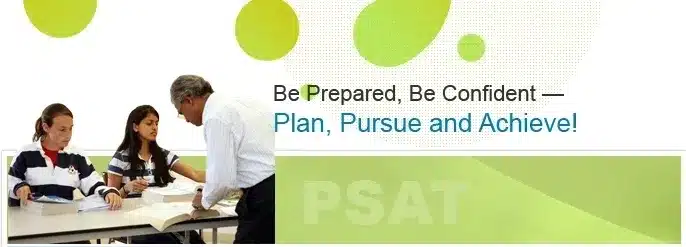PSAT/NMSQT – Preliminary SAT/National Merit Scholarship Qualifying Test
The Digital PSAT test has two modules:
(1) READING & WRITING: Each module contains 27 questions (54 questions in total). Time allotted: 32 minutes for each module.
(2) MATH: Each module contains 22 questions(44 questions in total). Time allotted: 35 minutes for each module.
The total test time is 2 hours and 14 minutes.
Purpose of test:
PSAT assesses knowledge and skills students have acquired in and out of the classroom and is a good indicator of how a student will perform in the SAT. Test results will provide students with specific sub-scores; this feedback allows students to gain insight into aspects that need improvement.
For entry to the National Merit Scholarship Corporation's annual scholarship program.
When taken?
While some students take the PSAT/NMSQT in October of their sophomore year, most students take this test in the fall of their junior year. Junior-year scores of the PSAT are considered for the National Merit Scholarship Program. The sophomore-year test is for practice only.
High schools administer the test and receive scores from the College Board for distribution to students in mid-December.


OUR PSAT TEST PREP PROGRAM
Our PSAT Test-prep Tutorials:
Students enroll in our PSAT tutorial as part of our COLLEGE BOUND PROGRAM at the end of their sophomore year by joining our summer session tutorials that run for 11/12 weeks, starting mid-July. Classes meet once a week, usually over the weekend, for three hours – 1 ½ hour math and 1 ½ hour verbal. Class size is limited to 15-18 students, and students are organized into classes according to their skill level/previous test scores.
For the "reading" portion of the test, students are taught specific strategies of how to read, highlight, comprehend, and answer questions. Since students are also tested in vocabulary-in-context, students learn vocabulary through proven methods other than the mere memorization of words. Students are also provided a thorough overview of grammar/ sentence structure skills to prepare them for the "writing" portion of the test, which asks students to revise and edit texts to express ideas and show facility with grammar, usage, and punctuation conventions.
In math, students learn concepts and skills to solve problems easily and quickly. Students are expected not only to show command of skills as well as knowledge in math but also to be able to apply this ability to solve problems. The class is taught by a dedicated expert who has developed specific teaching skills not only to impart successful math knowledge but also to instill test-taking confidence.
We believe math is best learned when a teacher can boil down difficult problems into simple concepts that can be easily grasped and are fun to learn.

